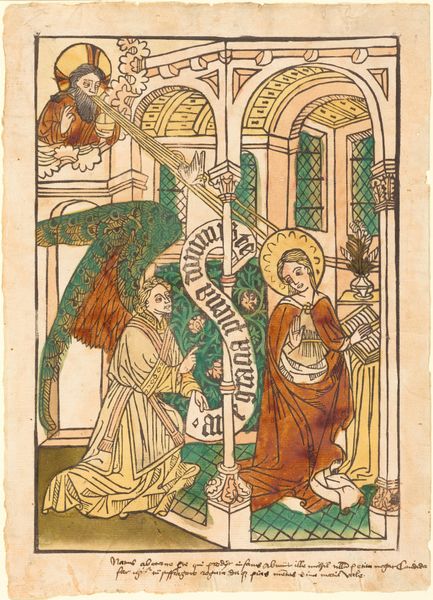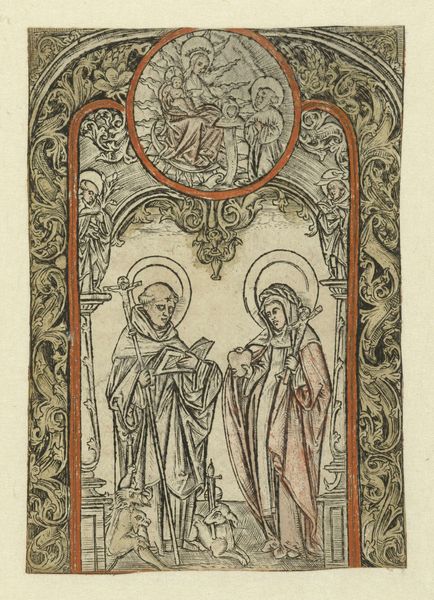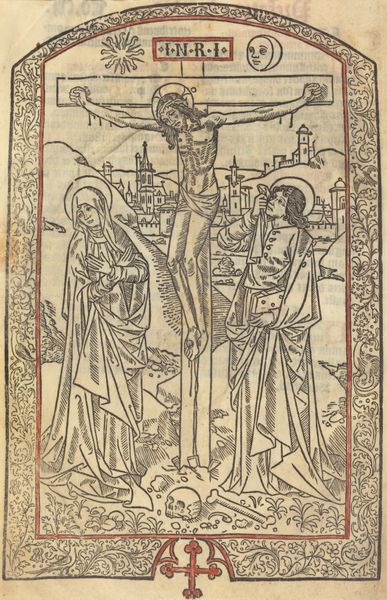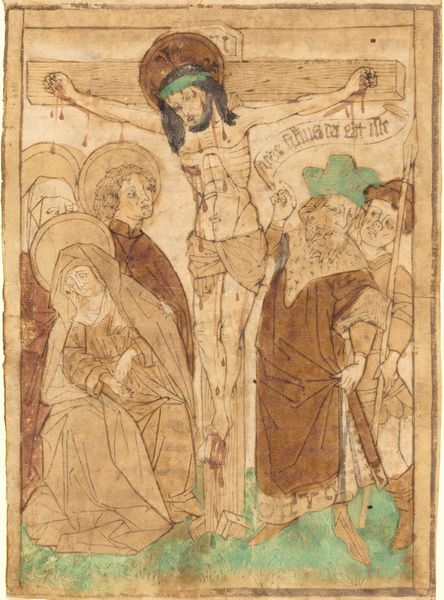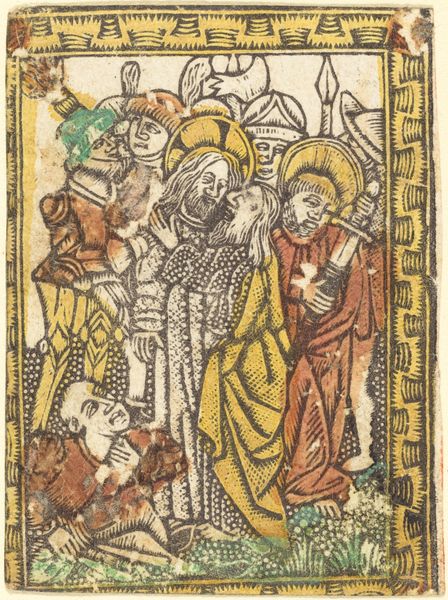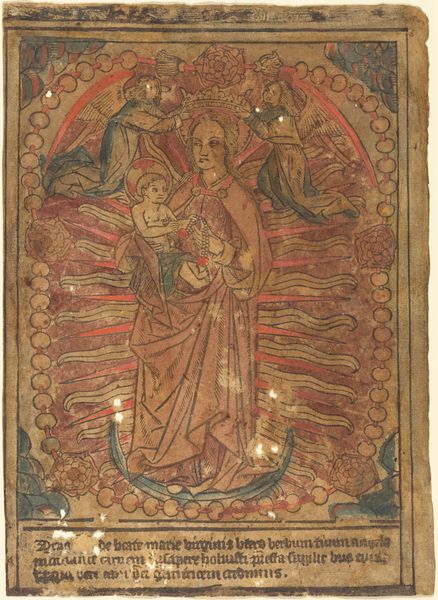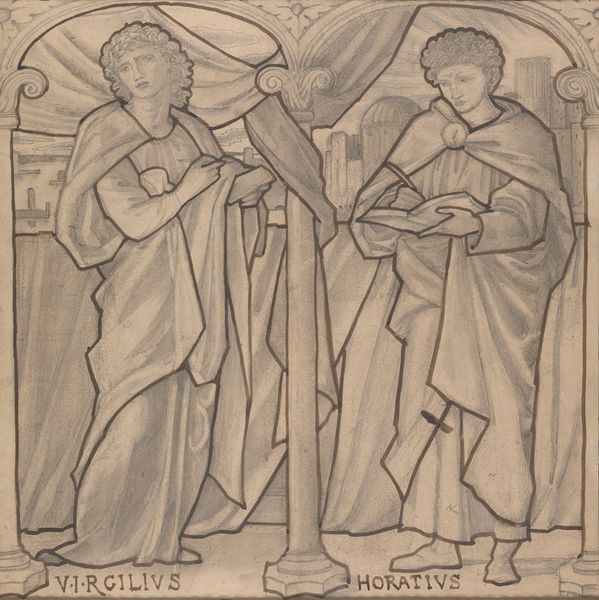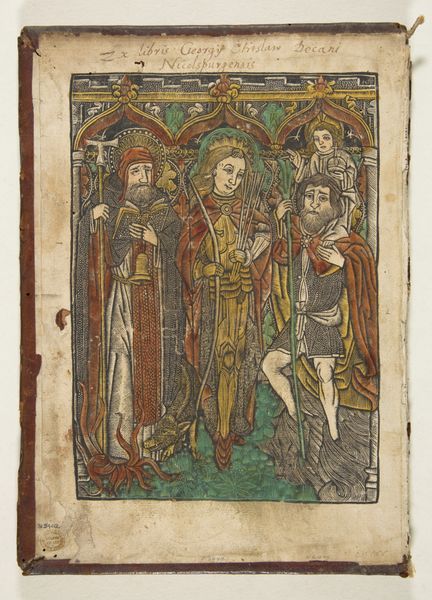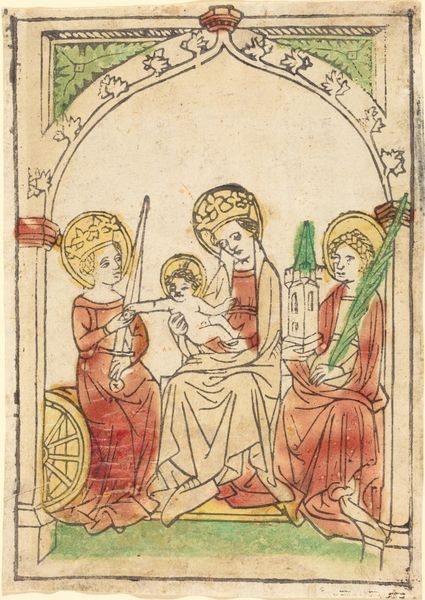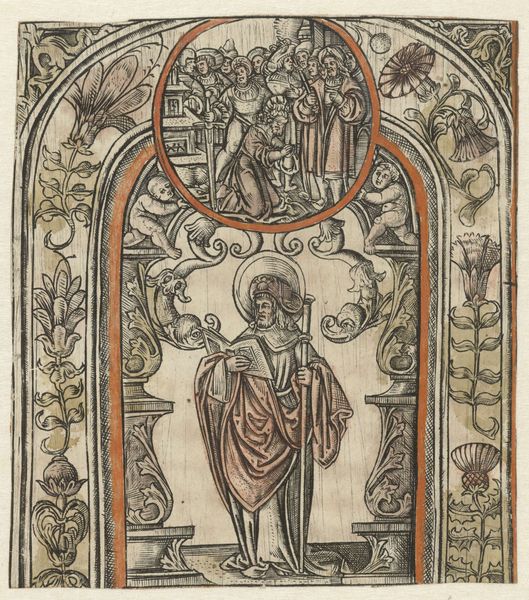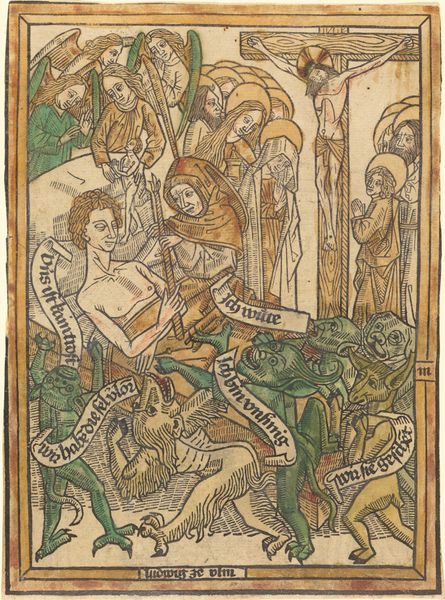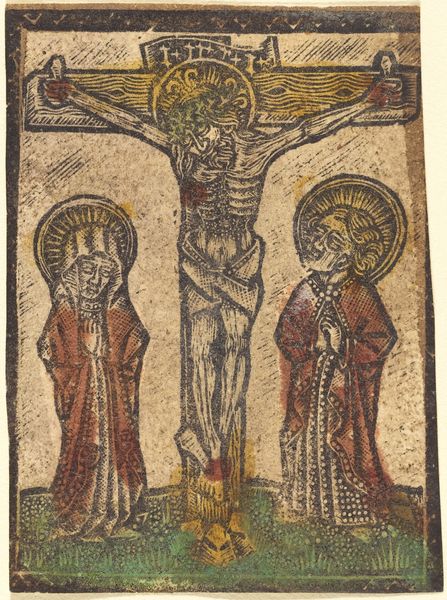
Saint Matthias and Saint Jude with Articles from the Credo 1450 - 1460
0:00
0:00
coloured-pencil, print
#
portrait
#
coloured-pencil
#
medieval
#
narrative-art
# print
#
figuration
#
coloured pencil
#
history-painting
Dimensions: sheet (trimmed to image): 15.5 × 10.6 cm (6 1/8 × 4 3/16 in.)
Copyright: National Gallery of Art: CC0 1.0
Curator: Right, let's talk about this striking piece, "Saint Matthias and Saint Jude with Articles from the Credo," believed to be created by Master d between 1450 and 1460. It’s rendered in coloured-pencil, surprisingly enough, in a print format. Editor: My initial reaction? Sombre. Even with the colour, there’s a weightiness to it. Like they're carrying the weight of the world, one with his axe, the other with what looks like a rather intimidating club. It’s quite… confrontational. Curator: The attributes are very symbolic, each saint identified by the tool of his martyrdom: Matthias and his axe, Jude with his club. What's really interesting to me is how the use of colour interacts with the linearity of the print. Look how the red and green define them, but never quite escape the bounds of the figures' outlines. Editor: The colour-pencilling almost softens the starkness of the figures though, doesn’t it? It adds a dimension that pure line drawing wouldn't capture. Look at the textures in the garments, those lovely, simple folds! The rendering feels simultaneously reverent and, well, medieval in its almost awkward depiction. And what’s with that perspective on the floor? Curator: That deliberate flattening is typical of medieval art—a rejection of strict perspective for symbolic clarity. It draws focus onto the saints, these pillars of faith. Those inscriptions, details from the Credo, floating above the saints reinforces that feeling. Editor: It gives them a beautiful weightiness; everything pushes inward. I appreciate how that heaviness highlights the fragility of faith through art, I love the texture, the overall colour palette and this slightly haunting look that seems frozen between past and present. It feels deeply human. Curator: Absolutely. And that, I think, is where the enduring power of this print lies—it invites us to meditate not only on faith, but on what it means to live, and sometimes die, for something you believe in. Editor: Well said. It's stuck with me already! Thanks for pointing out a few new angles, especially with your knowledge of technique and context.
Comments
No comments
Be the first to comment and join the conversation on the ultimate creative platform.
